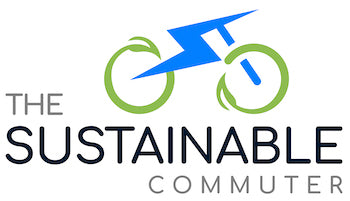
The Potential Environmental Impact of Prioritizing Sustainable Transportation and Limiting Truck Use for Businesses
Share
As the world faces the growing threat of climate change, finding ways to reduce carbon emissions has become increasingly important. One area where significant progress can be made is transportation. Limiting personal vehicle use and promoting sustainable transportation for commuting, as well as limiting truck use for businesses, could have a significant impact on the environment. In this blog post, we'll explore the potential environmental impact of these actions, the challenges and limitations of implementing sustainable transportation solutions, and some of the benefits of making this shift.
Limiting Personal Vehicle Use
Personal vehicles are a major contributor to carbon emissions, accounting for roughly 15% of global carbon emissions. Promoting sustainable transportation options, such as cycling, walking, and public transportation, could help reduce the number of personal vehicles on the road and lower carbon emissions.
Cycling and walking are particularly sustainable modes of transportation, as they produce zero emissions and promote physical activity. Public transportation, such as buses and trains, also produces lower emissions than personal vehicles, especially if powered by renewable energy sources. Additionally, electric bikes and scooters provide an alternative mode of transportation that produces fewer emissions and can provide an affordable and convenient solution for commuting.
However, there are challenges and limitations to promoting sustainable transportation options for personal use. For example, cycling and walking may not be feasible for individuals with mobility issues or physical disabilities. Additionally, public transportation may not be convenient or accessible in all areas. Overcoming these challenges is important to provide the infrastructure that supports sustainable transportation options, such as bike lanes and accessible public transportation.
Promoting Sustainable Transportation for Personal and Business Use
In addition to promoting sustainable transportation options for personal use, limiting truck use for businesses can also significantly impact the environment. Trucks are a major source of carbon emissions, accounting for roughly 7% of global carbon emissions. Encouraging businesses to use more sustainable transportation options, such as electric or hybrid trucks, can help reduce emissions even further.
There are examples of businesses that have successfully implemented sustainable transportation solutions. For example, delivery companies like UPS and DHL have added electric and hybrid trucks to their fleets, reducing their carbon emissions and improving their sustainability. Similarly, companies like Google and Facebook have implemented shuttle buses for their employees, reducing the number of personal vehicles on the road and providing a more sustainable transportation option.
Limitations of Sustainable Transportation for Business Use
While promoting sustainable transportation solutions for businesses is important, their implementation has challenges and limitations. For example, some industries require specialized transportation, such as refrigeration trucks for food and medical supplies. Additionally, some areas may not have the necessary infrastructure to support sustainable transportation options for businesses.
It's important to invest in infrastructure that supports sustainable transportation solutions, such as charging stations for electric vehicles and bike lanes for cyclists. Additionally, promoting incentives for businesses to invest in sustainable transportation solutions, such as tax credits or subsidies, could encourage more widespread adoption.
Benefits of Sustainable Transportation Solutions
In addition to the environmental benefits, sustainable transportation solutions can provide numerous other benefits. For example, cycling and walking promote physical activity, improving overall health and reducing healthcare costs. Similarly, public transportation can reduce traffic congestion, making commutes faster and more efficient. Additionally, sustainable transportation solutions can provide cost savings for individuals and businesses, as they often require less maintenance and fuel than personal vehicles.
Sustainable transportation solutions can also have a positive impact on social equity. In many areas, low-income residents are more likely to rely on personal vehicles, which can be expensive to maintain and fuel. Promoting sustainable transportation options can provide affordable and equitable transportation solutions for these individuals.
Final Thoughts
Limiting personal vehicle use and promoting sustainable transportation for personal and business use can significantly impact the environment and provide numerous other benefits. By reducing carbon emissions, improving air quality, promoting physical activity, and providing cost savings and social equity, sustainable transportation solutions can help create a healthier and more sustainable future.
However, implementing these solutions requires investment in infrastructure, such as bike lanes and charging stations, as well as incentives for businesses to invest in sustainable transportation options. Additionally, it's important to recognize the challenges and limitations of implementing these solutions and work to overcome them.
Overall, prioritizing sustainable transportation solutions and limiting truck use for businesses can significantly impact the environment and create a more sustainable future for all. It's up to individuals, businesses, and policymakers to work together to make these changes a reality.
